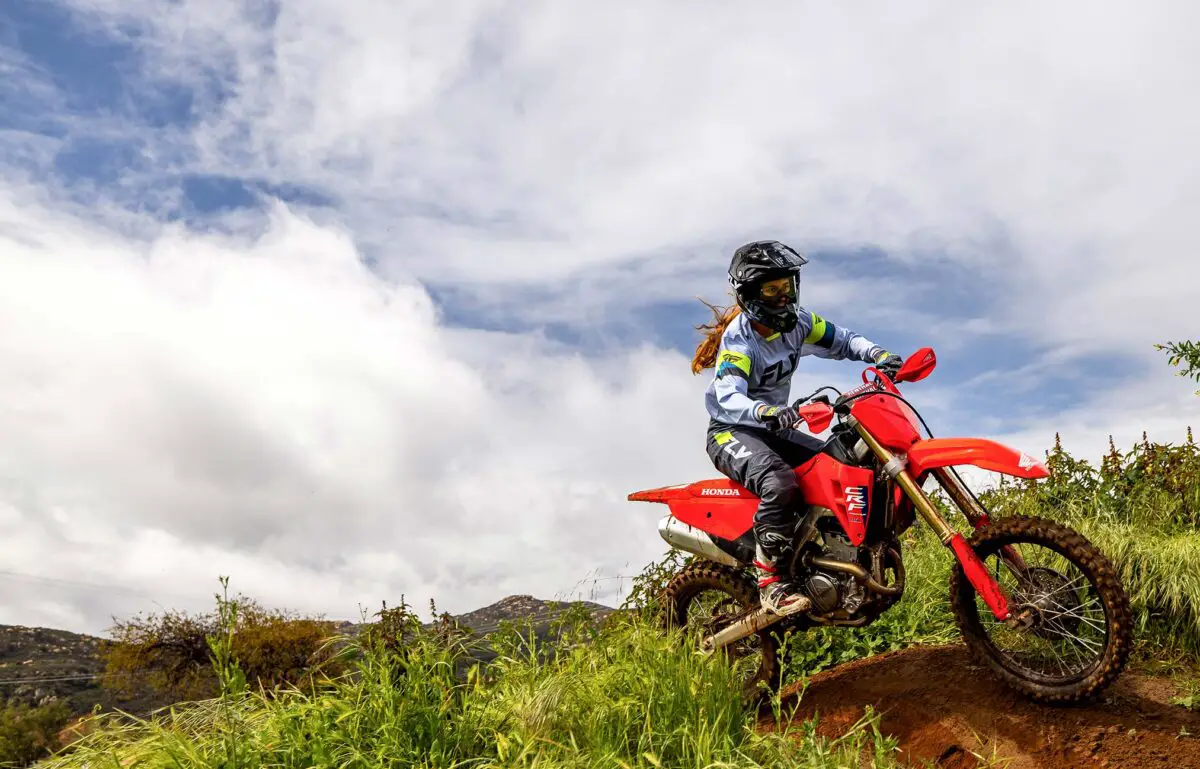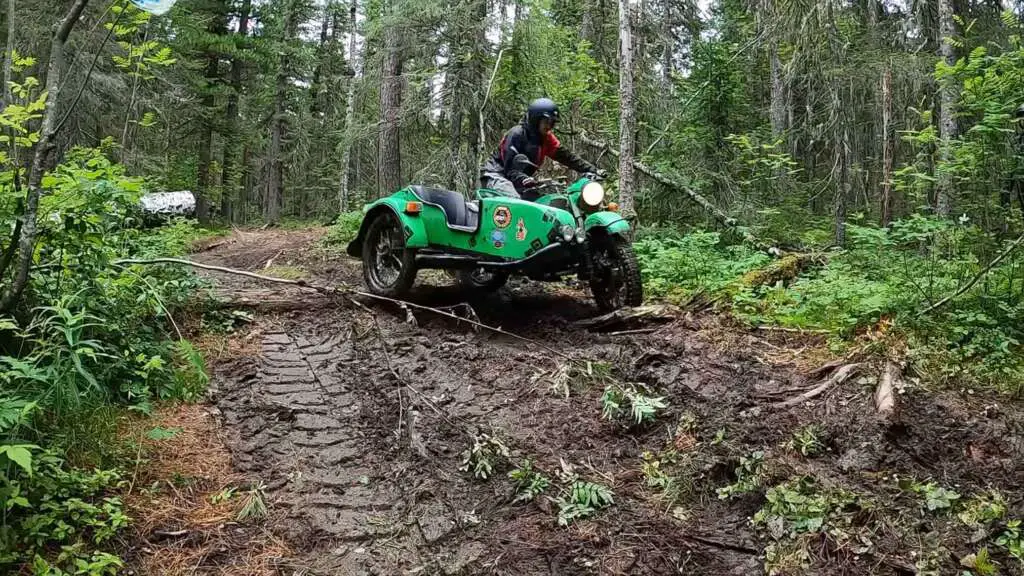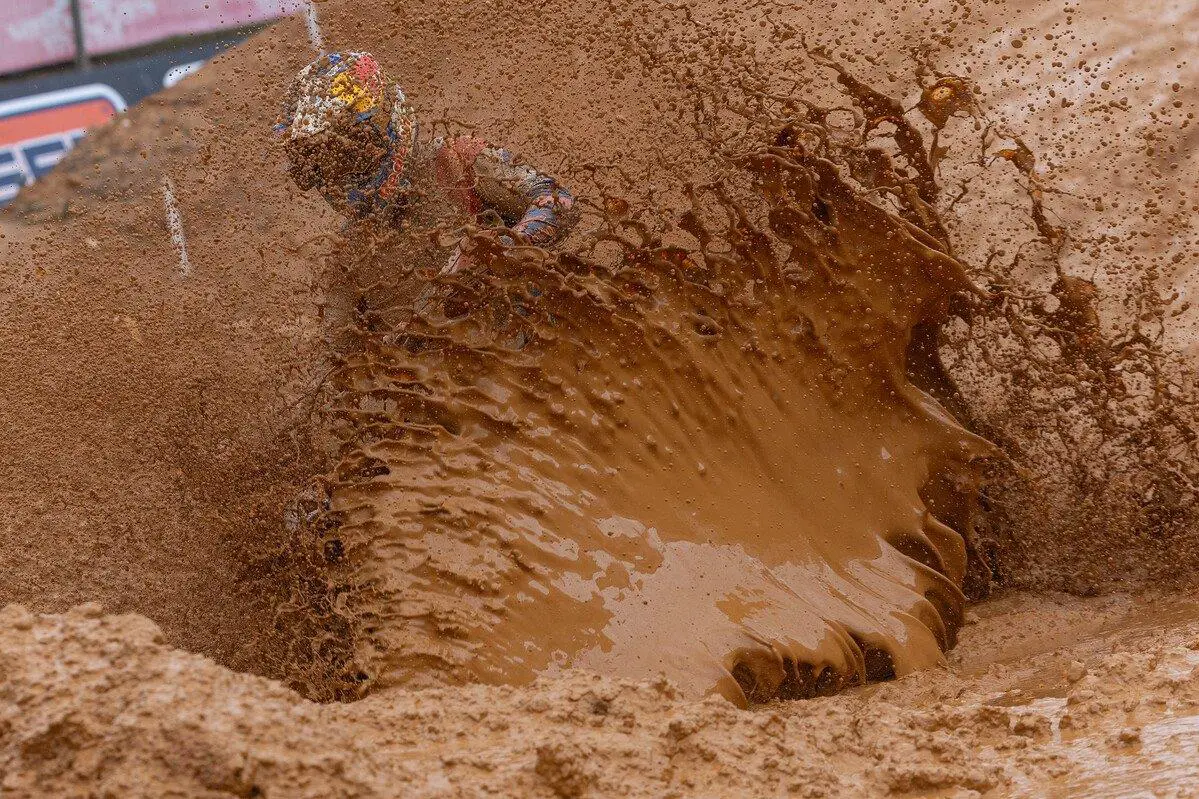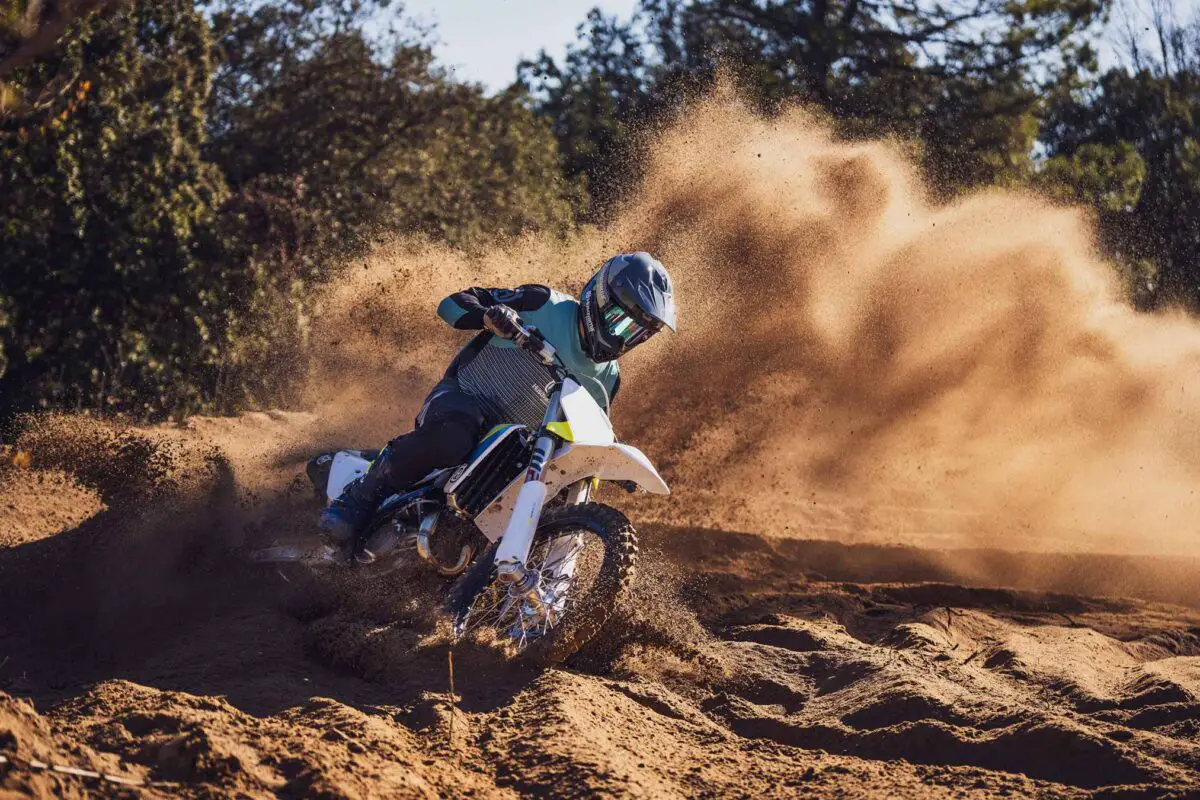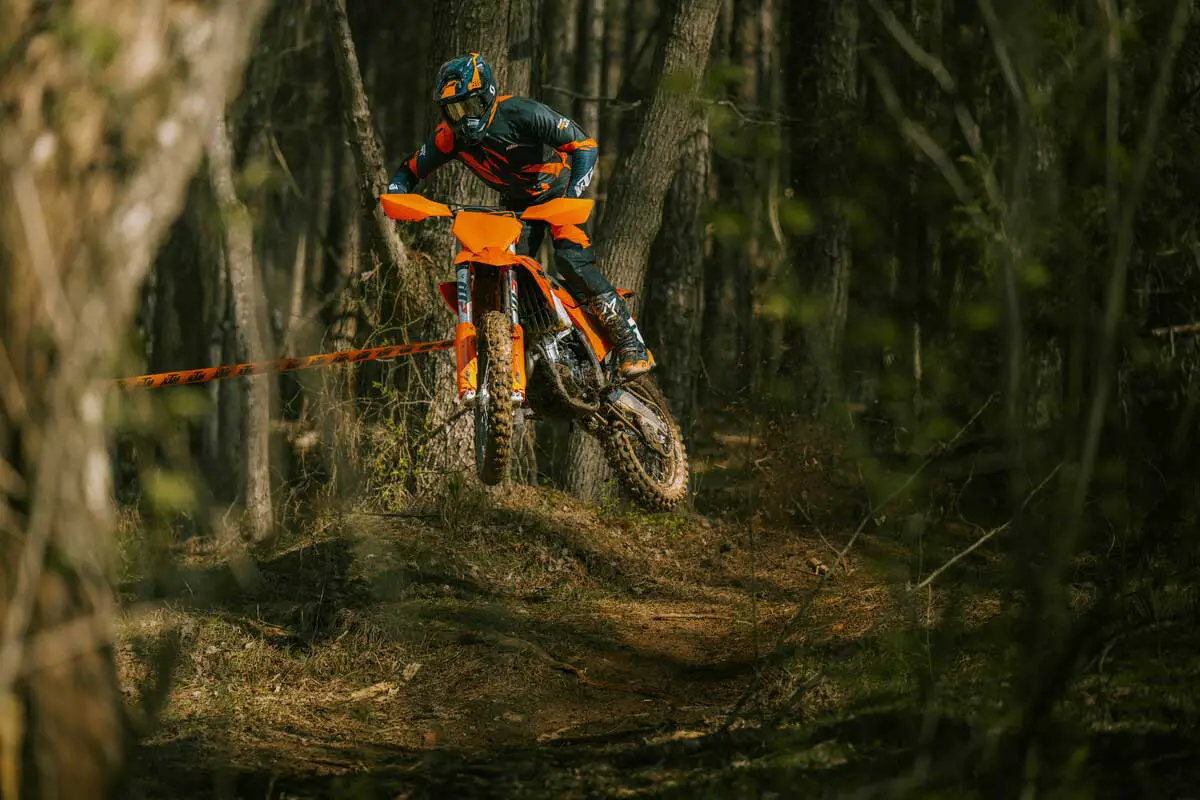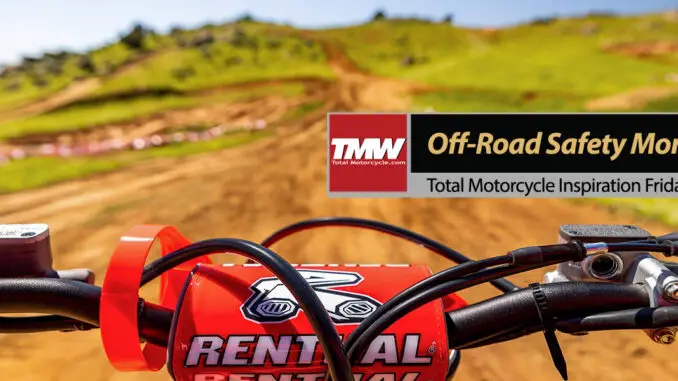
Off-roading in nature’s backyard is amazing but can be dangerous. National Off-Road Safety Month is June and that means sharing vital safety tips for ATV, Side-by-Side and off-road motorcycle riders! Join us with this week’s great Inspiration Friday: Off-Road Safety Awareness Month at Total Motorcycle. Let’s keep riders on the on and off-road doing what they love for longer. Canada is a massive country full of dirt, trail, mountain and back roads perfect for OHV’s to explore…everything a rider could ever dream of. But it’s also challenging, remote and depending on the month, dangerous (snow and hail storms can form in July!). So heads up for awareness and thanks to Moto Canada for starting this great project.
While it’s great news the Off-Highway Vehicle (OHV) industry is experiencing rapid growth and sadly drugs and alcohol is implicated in approximately 51% of ATV-related deaths from 2013 to 2019. Poor driving decisions related to hazardous terrain and slippery conditions contribute to 33% of these fatalities.
Let’s talk tips:
- Gear Up for Safety: Wear must-have safety gear before embarking on an off-road adventure. Ensure you’re fully equipped, from helmets to gloves, eye protection, and sturdy footwear. These essentials protect against risks and guarantee a secure journey for all thrill-seekers.
- Vehicle Inspection: Ensure your off-road vehicle is in peak condition before hitting the trails. A thorough check of brakes, tires, and lights is non-negotiable. Preemptively address any mechanical hiccups to beat breakdowns and accidents. It’s the key to a smooth and uninterrupted adventure.
- Know Your Limits: Before you go, gauge your skill level and your vehicle’s capabilities. Stick to maneuvers within your comfort zone to steer clear of unnecessary risks. By knowing your limits, you’re not just off-roading; you’re mastering the art responsibly, ensuring safety and sidestepping mishaps.
Let’s talk expert advice:
“Almost all of the factors which contribute to rider injuries are simple, preventable measures that everyone can apply to have a fun, safe time.” – President and CEO Landon French
“Similar to swimmers who need to complete morning laps to get into shape, the off-road community needs safety training to hone their skills,” said Jackie Barbe, Vehicle Programs National Manager from the Canada Safety Council.
“Let’s ensure that riders can continue to enjoy and discover Canada’s beautiful landscapes. Increased awareness of safety tips and resources empowers riders to embark on their adventures confidently,” said Guillaume Ferland, Chair of Moto Canada.
Upcoming Events, Rides and Rallies. For those visiting or living in Canada, I have included more than 60 events, dates and times, just for you for this year thanks to ridinalberta
Factoid: Did you know that USA does not have a Off-Road Safety Awareness Month?
Also do not forget to read our 2024 and 2025 Motorcycle Model Guides and check out what’s on offer for 2024 right here on TMW!
DO YOUR PART. PLEASE SHARE THIS ARTICLE!Total Motorcycle would like to thank Moto Canada, Ridinalberta and our 425 million of motorcycle riders and enthusiasts who visit and support TMW for inspiring us to bring you this week’s Inspiration Friday: Off-Road Safety Awareness Month! Each week we bring you another Inspiring Motorcycle story to inspire you to get out and ride. Please help us by joining Total Motorcycle on Twitter/X, YouTube and Patreon or by cash donation. Please help us help riders, support motorcyclists and motorcycling worldwide today. Thank you. |
Moto Canada Launches Off-Road Safety Month
Moto Canada to promote safe riding throughout the month of June
MARKHAM, Ont. — Moto Canada, the country’s industry association representing the world’s leading motorcycle and powersport brands, is proud to announce National Off-Road Safety Month this June. As enthusiasts get ready to explore Canada’s vast trails, Moto Canada highlights the importance of safety by sharing vital tips and resources with ATV, Side-by-Side, and off-road motorcycle users.
Driven by Canada’s scenic beauty and the increasing popularity of off-road recreation, the Off-Highway Vehicle (OHV) industry is experiencing rapid growth. According to the latest study, spearheaded by Moto Canada and its partners, there are currently 1.35 million Off-Highway Vehicle users in Canada.
“Our industry is strong in Canada, and we look forward to continuing our work to ensure that riders can continue riding safely,” President and CEO Landon French said. “Almost all of the factors which contribute to rider injuries are simple, preventable measures that everyone can apply to have a fun, safe time.”
Federal data reveals that riding under the influence of drugs and alcohol is implicated in approximately 51% of ATV-related deaths from 2013 to 2019. Poor driving decisions related to hazardous terrain and slippery conditions contribute to 33% of these fatalities. Other risk factors include not wearing helmets, riding alone, and unsupervised youth. These statistics highlight the need for comprehensive safety measures and increased awareness campaigns to reduce off-road-related fatalities.
With the arrival of warmer weather across the country, refreshing one’s knowledge of off-road vehicle safety becomes an essential seasonal ritual. The Canada Safety Council, a national charity dedicated to the cause of safety, offers valuable off-road vehicle training to enthusiasts.
“Similar to swimmers who need to complete morning laps to get into shape, the off-road community needs safety training to hone their skills,” said Jackie Barbe, Vehicle Programs National Manager from the Canada Safety Council.
Canada Safety Council’s training courses can be viewed here.
The Economic Impact Study further reveals that the off-road community currently generates over $2.3 billion in Canada’s tourism spending, signaling robust growth and enthusiasm within the community.
“Let’s ensure that riders can continue to enjoy and discover Canada’s beautiful landscapes. Increased awareness of safety tips and resources empowers riders to embark on their adventures confidently,” said Guillaume Ferland, Chair of Moto Canada.
SAFETY – MOTORCYCLES
Every spring the motorcyclist emerges from hibernation to face a new season of fun and freedom. Every May we have “Motorcycle Safety & Awareness Month” to commemorate the new riding season and promote a safe riding season.
The Safety part of the month applies to the rider. The rider’s skills may be rusty as a result of their long winters nap. The roads are cold, dirty and slippery. This combination can be fatal to the unsuspecting rider. Therefore, it is important to spread the word of safety to our fellow riders each spring.
At the same time automobile drivers have become quite accustomed to driving without the worry of their exposed two and three wheeled counterparts. The auto drivers must have their optics reprogrammed to see motorcycles. Without the programming riders will be invisible even when they are in clear sight.
Riders can do many things to help them stay safe. Skill improvement through additional training. Practice is important before the rider embarks on extended journeys. ATGATT stands for All The Gear All The Time. Even a quick trip warrants proper protective riding gear.
Drivers can add motorcycles back to their visual menu. Be alert and be aware.
SAFETY TIP #1: GET COMFORTABLE ON YOUR MOTORCYCLE
Comfort begins with having your bike set-up for you. Motorcycle Ergonomics 101 will tell you that every motorcycle made can be personalized. Short or tall seats may be available for your bike that will make it more comfortable and easier to touch the ground when you stop. Controls are adjustable so that you can change the reach or the angles of the brake and clutch levers.
The same applies to the brake pedal and shift lever. If you’re not experienced with wrenches, you should consider booking an appointment with your dealer’s service department to have them customize the fit. Proper ergos can make a night and day difference to your comfort.
The second comfort zone revolves around your riding skills. If you are a new rider, you may shy away from moto socials because you are not comfortable riding in a group. You may not like roads with lots of turns or you may not like stop and go traffic. The only way to get more comfortable is to gain more confidence in your skills. Confidence is easily acquired if you practice your riding skills and/or take riding courses. A training course can break any bad habits and teach you great practice drills including practising your brakes, your turns and emergency maneuvers.
Speed can also be intimidating. It can quickly take you out of your comfort zone. Your comfort with speed is directly related to how far you look ahead. It is also dependent on your ability to plan for changes in speed. If you want to stay calm and well within your comfort zone you need to get in the habit of looking far enough forward to be able to react to changes well in advance. If you feel a sense of panic or anxiety it is a signal to look up and look where you want to go.
A little practice and a few tweaks to your motorcycle’s ergonomics can ensure your rides are enjoyable experiences. You should always aspire to be the best rider that you can be and take all the available steps to get there.
SAFETY TIP #2: DO A PRE-RIDE BIKE CHECK
You don’t have to be a mechanic to do routine maintenance checks on your motorcycle. Routine checks all start with your MOM. That’s right, your Motorcycle Owners Manual! If you don’t have one you can probably buy one at your local dealership or download a copy.
Tires are the most important check. Under-inflation is a common problem that leads to accelerated and uneven wear. In order to check your tire pressure you should have a tire gauge and a pump or source of compressed air. Your Motorcycle Owners Manual should explain the procedure and the pressure range. It is important to note that the pressure indicated on the tires sidewall is the recommended pressure with the maximum load on the bike.
As you work your way up the bike your next stop should be the brakes. Most of the time the pads are pretty hidden from the untrained eye. If you can’t confirm that there is brake pad material left at least confirm that the discs have a uniform wear pattern without deep grooves or uneven markings. The pads should contact the entire surface of the disc area. It’s best to check the brakes before a ride to avoid getting burnt on hot brake discs.
You will probably find a whole section on checking your fluids in your MOM. Engine oils generally start out honey coloured. If it’s now black it’s probably time for a change. Generally there are two ways to check the level or quantity of your motorcycle oil. One is an oil sight window, the other is a dipstick. Both methods require the motorcycle to be vertical when checking the level. This can be done while the bike is on a centre stand or when it’s being held vertically. This is a great two person job. The oil sight window is pretty straight forward, the oil level should be in the middle of the window. A dip stick is to be dipped in the hole, not threaded in. Wipe it off, dip it in, pull it out and read the level. Remember to thread it back in before riding!
Antifreeze is generally checked in the coolant reservoir. Keep it between the lines and add motorcycle approved coolant if required. Never loosen the rad cap when the motorcycle is hot.
Control fluids like brake and clutch fluids are rated by DOT value. The top of the reservoir should specify the grade. When it’s fresh it is a golden colour and when it’s black it needs to be flushed. It’s important to know that DOT4 brake fluid can ruin paint. Have brake cleaner handy and immediately clean off any spilled fluid. As you know, brakes are really important. If you’re not sure what you’re doing, have a licensed mechanic service your brakes.
Brake levers, clutch levers and throttle should all snap back when released. If any controls hesitate or release slowly it is a sign that maintenance is required.
A quick circle of the bike when it’s running will confirm that all lights are functional. A dab of the turn signal, brake lever and brake pedal will confirm that the lights are working.
All of the periodic maintenance listed above is best done on a clean bike. Washing and polishing your bike is a great way to identify any loose parts or potential problems that might need the attention of a mechanic.
A clean and maintained bike is a safe bike to ride!
SAFETY TIP #3: PRACTICE YOUR SKILLS
Best-selling author Malcolm Gladwell says it takes 10,000 hours of practice to achieve mastery of complex skills. Three questions jump out at this theory. 1 – is motorcycle riding a complex skill? 2 – can I fast track it? 3 – what happens if I practice the wrong skills?
Motorcycle riding is a very complex skill that involves the use of both hands and both feet to operate the controls. Sort of like a drummer in a band. It takes tremendous coordination especially when at speed.
Achieving mastery can happen fast for some and slower for others. Motorcycle rider training schools can definitely accelerate the process. There are basic, advanced and refresher courses available across the country. Your ability to fast track your learning curve is a little dependent on genetics and a lot dependent on the effort you put into improving.
Practicing the wrong skills can decelerate the learning curve. Training courses extend beyond the classroom and practice area. The class drills can easily be replicated in a vacant parking lot. Skills like looking where you want to go can be practiced every day.
Practice may not make you perfect, but it will make you the best rider that you can be.
SAFETY TIP #4: BE SEEN
Do you know that certain person that always needs to be the center-of-attention? They dress brilliantly, they dance around the party and command your attention. If the road was a party and you’re a motorcycle rider you need to be that person.
Step 1, dress for success. high visibility clothing works and the higher you wear it on your body the more visible it is. Your helmet and jacket create the biggest wow. It’s motorcycle eye candy to the oncoming driver!
Step 2, your riding habits can also make you conspicuous. Just like playing pool, angles matter when it comes to visibility. If there is a line of cars oncoming you need to be wary of someone pulling out to pass or turning left in front of you.
Although we are taught to ride near the centre line (left tire track) for visibility, a gentle shift to the right side of the lane will give the second, third or fourth car a better angle to see you. The whole width of the lane is yours, use it wisely.
A good habit to use when approaching an intersection is to gently weave across the lane. The eyes of the oncoming drivers will pick up lateral motion. This is a “Hey, I’m here, look at me” manoeuvre.
Use all the tools at your disposal to stay safe and stand out in a crowd. Take an advanced riding course, dress for visibility and use your angles and lateral motion to be seen.
SAFETY TIP #5: BRAKING NOT BREAKING
Braking is the art of slowing down. Breaking is misjudging the process and breaking something on you or your bike.
The key to hard braking is to do it when the bike has zero lean angle and to react quickly but smoothly. Zero lean angle means you have maximum contact patch available for braking forces (see “The Fight for Traction”). It is important to remember that most of your braking should be done before you turn into the corner. Hard braking after the turn in point will make the bike stand up and run wide. This may result in you crossing the centre line into oncoming traffic or running off the road.
It is important to react quickly. A motorcycle travelling at 100 kph gobbles up almost 28 meters/second. In 3 seconds a motorcycle will travel the length of a football field. Good reactions come from good vision (see Eyes Part 1, II & III).
SAFETY TIP #6: REACT DON’T PANIC
When you are motorcycling and you are faced with an emergency you can either “PANIC” or “REACT”.
When you panic you give up control. You might hold your breath. You might close your eyes or target fixate on the problem. You will grab the grips so hard that you can’t roll off the throttle or use the brakes. You are headed for disaster.
Now replace the word panic with react. As in, “when I am faced with an emergency situation I PANIC REACT”!
Generally, there are two ways to react. #1 is to brake. If someone turns left in front of you, react by braking hard. #2 is to swerve. If braking hard doesn’t work, try swerving around the problem.
You may also have to react to debris on the road by altering your line (swerving). Debris, sand & gravel should be approached when the bike is vertical with no lean angle. There should be no sudden inputs. There should be no sudden changes in throttle, brakes or direction when you’re riding through the debris. Once you are through the debris you can react again to resume your direction of travel.
When reacting it is important to note that a motorcycle will do one thing very well but not two things at the same time. Therefore, braking and swerving should not be combined at the same time. Brake hard, release the brakes, swerve and then brake hard again if necessary. You have a toolbox full of reactions, use the response that best suits the situation.
Replacing PANIC with REACT isn’t an immediate process. You must train your brain. Panicking is easy, reacting is a greater skill. The easiest way to learn to react is to take a course. Have a professional train your brain.
Once your brain has passed “Reaction 101” you need to practice until reacting becomes second nature. Once you replace “Panic” with “React” you can also replace “Aw Shoot” with “I got this”!
SAFETY TIP #7: WATCH FOR MOTORCYCLES
Eyes are the windows to your brain, they control what you see and how you react. You have probably heard of target fixation or, conversely, “to look where you want to go”. The first, target fixation, is a must not and the second, “to look where you want to go”, is an absolute must.
Eyes may not naturally know to look where you want to go i.e. “look at that squirrel”. You do need to train your eyes to identify where you want to go. Looking far enough ahead is a learned skill. The faster you go the more you need to prepare for the circumstance around you.
Training your eyes how far to scan ahead is very important to your safety. Looking at your front fender or hood ornament will not give you enough time to react in an emergency. SIPDE is an acronym that means the rider:
Scans far enough ahead
Identifies any potential risks
Predicts traffic patterns
Decides an evasive maneuver if required
Executes the action to avoid a collision
Everything to do with SIPDE relies on your eyes. It is being proactive rather than reactive. If you actively train your eyes you will eliminate most surprises and be a much safer rider.
Canada’s motorcycle and off-highway vehicle industry contributes billions to the economy
Economic impact study offers biggest look at industry’s contributions, with $17.3 billion in output and $9 billion in GDP
MARKHAM, Ont. — Canada’s motorcycle and off-highway vehicles (OHV) industry has an annual total economic impact of $17.3 billion, with an additional $9 billion in total GDP, according to the most in-depth economic impact study done in the sector’s history.
The study, commissioned by Moto Canada, The Motorcyclists Confederation of Canada and the Canadian Quad Council, and completed by MNP LLP, provides the most comprehensive look at the industry’s contributions to the economy — analyzing jobs, vehicle and equipment sales, tourism and more.
The study found the industry employs more than 88,300 people and contributes over $3.2 billion in total government and fee revenue.
Moto Canada President and CEO Landon French says what’s more important than the numbers is what they represent.
“This research shows both the scale and the stakes when it comes to the powersport industry in Canada,” French said. “When we consult with government, lead a safety campaign or promote our activity to new riders, that it’s much more than just transportation or recreation – we are a significant contributor to the economy and identity of Canada.”
To put some of these numbers in perspective, the direct and indirect employment generated by on-road and OHV recreation is equivalent to the number of jobs created through the construction of approximately 36,600 homes.
Provincially, Quebec is the leader of the industry, contributing $4.2 billion in output, $2.2 billion in GDP and providing a third of Canada’s jobs.
“Those involved in the powersports industry aren’t just building and selling vehicles, running businesses, clubs, and schools and contributing to tourism, they are ultimately helping people explore all of the beauty of this country on and off-road,” added Geoff Jilg President of the Motorcyclists Confederation of Canada. Peter Mellish, President of the Canadian Quad Council complimented Geoff’s statement by adding that “this study
quantifies the increased traffic that we are noticing on managed trails across Canada”.
In addition to recreation, these vehicles are used in industries such as agriculture, forestry, mining, search and rescue and energy.
“Knowing the full scale of this industry is something everyone involved in it should know, whether it’s people selling vehicles in stores, or government working on rules and regulations for it,” said Guillaume Ferland, Chair of Moto Canada. “We are so proud to work in this space and serve those who ride.”
About Moto Canada
We exist so Canadians can ride.
Moto Canada is the nation’s leading industry association representing the interests of the world’s best powersports brands. Moto Canada is a driving force, uniting Canadians with the exhilarating world of powersports and as industry advocates, we champion Canadians’ ability to ride both on and off road.
Moto Canada Connect is a for-profit marketing and media company owned by Moto Canada and powersport manufacturers. Moto Canada Connect owns and produces The Motorcycle and Powersport Shows, Canada’s premier powersport shows.
Upcoming Events, Rides and Rallies
JUN. 1
CJAY 92 Kids Fund Motorcycle Rally
- 9:00 a.m. 6:00 p.m.
- Big Sky BBQ
JUN. 1
Calgary Spring Poker Run (One Broken Biker)
- 9:00 a.m. 4:30 p.m.
- Precision Frameworx
JUN. 1
Memorial Poker Run
- 11:00 a.m. 6:00 p.m.
- Resolve Bar and Grill
JUN. 2
Two Wheel Sunday
- 10:00 a.m. 3:00 p.m.
- 5 Street NortheastCalgary, AB, T2E Canada
JUN. 2
2024 Spring Charity Ride
- 11:00 a.m. 5:00 p.m.
- 5022 50 StreetOlds, AB, T4H 1S1 Canada
JUN. 7 TO JUN. 8
14th Annual Fire n’ Wheels Rally
- Wainwright, AB Canada
JUN. 7 TO JUN. 9
Ride for Vision and Valour
- Tim Hortons
JUN. 8
Ride For Dad (Edmonton)
- 7:00 a.m. 5:00 p.m.
- Blackjacks Roadhouse
JUN. 14 TO JUN. 16
9th Annual Kickstart Show
- The Pioneer
JUN. 15
Ride For Dad (Fort McMurray)
- 7:00 a.m. 5:00 p.m.
- Holy Trinity High School
JUN. 15
Ride For Dad (Calgary)
- 7:30 a.m. 5:00 p.m.
- Ralph’s Motorsports
JUN. 15
Summer Oldstice MVP Car and Bike Show and Shine
- 8:00 a.m. 5:00 p.m.
- Olds, AB Canada
JUN. 15
Bikers are Buddies Poker Run
- 8:00 a.m. 5:00 p.m.
- Royal Canadian Legion
JUN. 15
15th Annual Delburne Shine and Show
- 9:00 a.m. 5:00 p.m.
- Delburne, AB, T0M 0V0 Canada
JUN. 15
East Bound and Down Poker Run
- 9:30 a.m. 5:00 p.m.
- Camrose, AB Canada
JUN. 15
Revving for Care Fundraiser
- 10:00 a.m. 6:00 p.m.
- Muskoseepi Park
JUN. 15
Six Pak Saloon Motorcycle Swap and Sell
- 11:00 a.m. 10:00 p.m.
- Six Pak Saloon
JUN. 20 TO JUN. 23
The Boreal Royale
- Fort McMurray, AB Canada
JUN. 21 TO JUN. 23
2nd (6th) Annual Fat Boys Motorcycle Assoc. Poker Rally
- Fox Haven Golf and Country Club
JUN. 21 TO JUN. 23
9Th Annual Bluffton Rock Ride
- Spruce Haven
JUN. 22
Ride For Dad (Rural Alberta, Didsbury)
- 7:00 a.m. 5:00 p.m.
- Zion Evangelical Missionary Church
JUN. 22
For The Love Of Motorcycles (FTLOM)
- 10:00 a.m. 3:00 p.m.
- Blackjacks Roadhouse
JUN. 22
UBAKA Blackfalds 3rd Annual Poker Run
- 10:00 a.m. 5:00 p.m.
- Resolve Bar and Grill
JUN. 23
Big Sky On Lil’ Bikes presented by Mini Moto Mob
- 12:30 p.m. 5:00 p.m.
- Calgary HD
JUN. 28 TO JUN. 30
2024 Six Pak Saloon Ole School Rally
- Six Pak Saloon
JUL. 6
UBAKA Edmonton Chapter 8th Annual Poker Run
- 8:00 a.m. 5:00 p.m.
- Righand Distillery
JUL. 13
Defenders 1st Annual Show and Shine
- 12:00 p.m. 4:00 p.m.
- Doyle’s Pub
JUL. 14
3rd Annual Forever 41 Memorial Ride
- 10:00 a.m. 3:00 p.m.
- Kimmers Gas Plus
JUL. 18
TO JUL. 28
17th Annual Run to the Hills Rally
- Two Hills, AB, T0B 4K0 Canada
JUL. 20
UBAKA Wetaskiwin Chapter 3rd Annual Poker Run
- 9:00 a.m. 5:00 p.m.
- Wetaskiwin Mall
JUL. 20
Ride For Dad (Southern AB, Coaldale)
- 9:00 a.m. 5:00 p.m.
- Coaldale Inn
JUL. 20
Three Angels Poker Chip Run
- 9:00 a.m. 5:00 p.m.
- Yavis Lounge
JUL. 27
Third Annual In the Wind Memorial Ride
- 10:00 a.m. 4:00 p.m.
- New Horizon Mall
AUG. 10
Ride to Reynolds
- 10:00 a.m. 5:00 p.m.
- Reynolds Museum
AUG. 17
Ride For Dad (Red Deer)
- 7:30 a.m. 5:00 p.m.
- Turple Brothers
AUG. 17
AAA 12th Annual Poker Run
- 9:00 a.m. 11:55 p.m.
- Mad Rose Pub
SEP. 22
41st Annual Edmonton Toy Run
- 9:00 a.m. 5:00 p.m.
- Blackjacks Roadhouse



